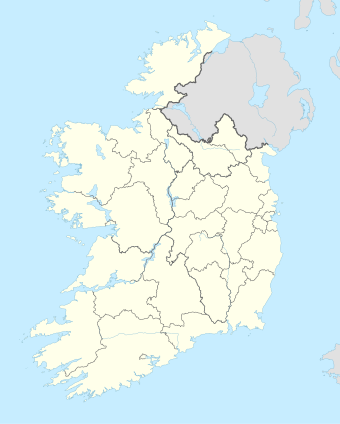This article needs additional citations for verification. (May 2008) |
The Dublin–Belfast corridor[1] (population 3.3 million) is a term used to loosely describe a geographical area that encompasses the Republic of Ireland's capital city, Dublin and Northern Ireland's capital city, Belfast. It also includes the smaller cities of Lisburn and Newry; major towns such as Drogheda and Dundalk;[2] and the Dublin satellite suburb of Swords.[3] The term has been used in papers regarding planning strategies in the area, with the aim of capitalising on the expanding economies of both cities.[4] Since the implementation of Brexit, the corridor exists inside the European Union on its Republic of Ireland side, and outside the European Union on its Northern Ireland side, but there is no so-called "hard border" between the two states.
Economy
editThe main economic engines of the region are the Greater Dublin Area and the Belfast Metropolitan Area. Greater Dublin has a GDP of around €222 billion (2022) while Belfast Metropolitan Area has €43 bn (2022) giving a total regional GDP of €265 bn. [citation needed]
Infrastructure
editThe main route linking the two cities is along the M1 and N1 in the Republic of Ireland and the A1 and M1 in Northern Ireland.
There is also the Enterprise train service connecting the two city regions.
There are three major airports: Dublin Airport (32.9 million passengers; 2018), Belfast International Airport (6.2 million passengers; 2019) and Belfast City Airport (2 million passengers; 2019) which together deal with over 40 million passengers each year.
For the two cities:
- Dublin is served by the Dublin Suburban Rail network, Dublin Bus network, Luas tram network, Dublin Area Rapid Transit and the planned MetroLink.
- Belfast is served by the Belfast Suburban Rail network, Metro (Belfast) bus service, the new Glider (Belfast) bus rapid transport system and some Ulsterbus services.
See also
edit- Economy of Dublin
- Economy of Belfast
- Central belt Scotland (Glasgow-Edinburgh) (3.5m)
- Øresund Region
- Tricity Poland
- List of European city regions
References
edit- ^ Moriarty, Gerry (24 March 2021). "Dublin-Belfast economic corridor will enhance economic and social cooperation, Varadkar says". The Irish Times. Dublin. Retrieved 6 January 2022.
- ^ "Report on Workshop on the Dublin Belfast Corridor" (PDF). October 2003. Archived from the original (PDF) on 3 March 2009. Retrieved 6 January 2022.
- ^ "Home page". Dublin Belfast Economic Corridor. Retrieved 6 January 2022.
- ^ Yarwood, John R (2006). The Dublin-Belfast Development Corridor: Ireland's Mega-City Region?. Ashgate Publishing. ISBN 978-07546-47027.

